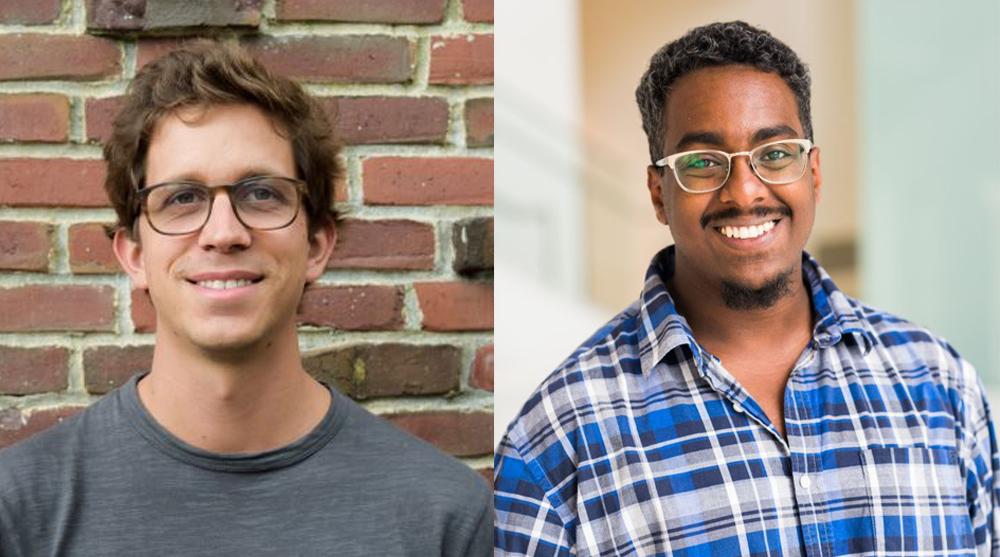We’d like to take the opportunity to introduce you to the winner of the Honorable mention of our “Gauja National Park Footbridge ” competition - Paul Mayencourt and Mohamed Ismail from United States!

Paul Mayencourt and Mohamed Ismail from United States
Mohamed and Paul are PhD students in the Digital Structures research group at the Massachusetts Institute of Technology. Digital structures focuses on the synthetic integration of creative and technical goals in the design and fabrication of buildings, bridges, and other large-scale structures. We are interested in how digital techniques and tools can play an unexpected and collaborative role in the design process.
Mohamed is a designer researching the potential role of structural efficiency and digital fabrication in the developing world. Previously, he was a lecturer at the University of Virginia’s School of Architecture. He received his Master’s in Architecture at the University of Virginia, and his Bachelor’s Degree in civil engineering at Duke University.
Paul is a structural engineer who conducts research on structural optimization and digital fabrication of timber structures. Prior work includes research on digital fabrication of timber folded plate structures at the Laboratory for Timber Constructions in École Polytechnique Fédérale de Lausanne, and several years as a practicing bridge engineer in Zurich, Switzerland.
We research the potential role of structural optimization at multiple scales of construction. Investigating the overlap between structural mechanics, computational optimization, and digital fabrication, we ask how research can enable performance-oriented design.
Presently, Mohamed is developing material efficient concrete structural systems for India’s affordable housing market. In a context where material costs constrain affordable construction, material efficiency is vital to curbing India’s housing crisis. Conversely, Paul is developing efficient systems of timber construction. These systems pair an understanding of timber’s material properties with emerging digital fabrication methods for lightweight and efficient mass-timber construction.
What does architecture mean to you and what is the role of an architect in your society?
Architecture is an answer to specific and local needs shaped by time, place, and intention. Within architecture, artistic expression, human geography, historical narrative, societal equity, and more coalesce in the design of space. As a result, architects occupy a seemingly paradoxical position between servitude and significant influence. As architects design the built environment to meet people’s needs, they influence society through program, aesthetic, function and purpose. In the case of a bridge, architecture can transform a purely functional crossing to a transitional experience, differentiating an aging infrastructural object from a potent historical landmark.
Why do you participate in architecture vision competitions?
Competitions allow us to explore emerging research through concrete design exercises, elevating our design process and scientific inquiries through their overlap. They also give us an opportunity to playfully exercise our design skills and develop effective methods of collaboration and communication.
What advice would you give to individuals who struggle to decide whether it would be beneficial for them to participate in architecture vision competitions?
It helps to be selective, choosing competitions that overlap with your personal design questions. We choose competitions that overlap with our research, giving us an opportunity to enrich and explore ongoing investigations. When you find a competition that piques your interest, go for it!
Top 3 Reasons Why You Should Enter Architecture Competitions
Curious about the value of architecture competitions? Discover the transformative power they can have on your career - from igniting creativity and turning designs into reality, to gaining international recognition.
Learn more



























